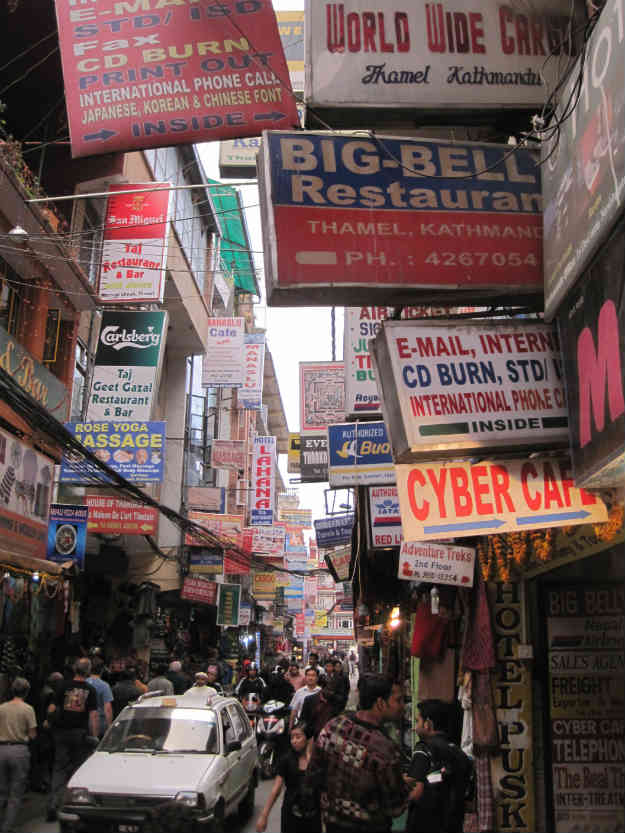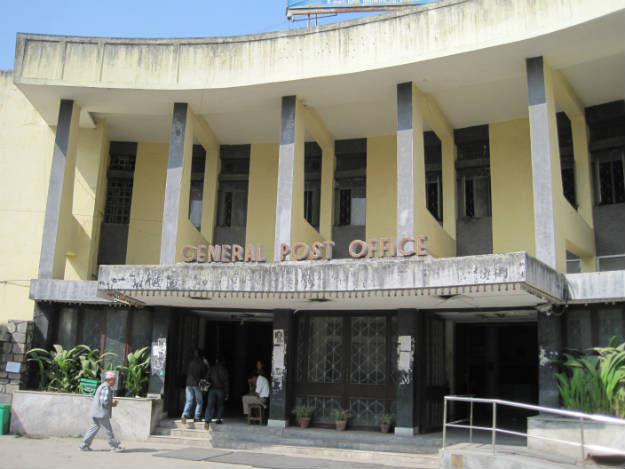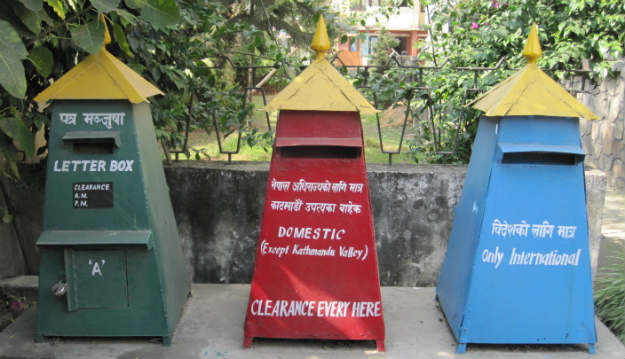I decided it was a good time to move out of the Hotel Impala when I turned on the TV one morning and it made a sizzling sound, then smoked. Who needs a TV anyway? Overrated. I moved to another sad hotel, but closer to the bus station to get out of town. And I’m very ready to get out of town.
Let me say this straight: Kathmandu, one of the greatest, most evocative place names in the world, right up there with Timbuktu, Zanzibar and Rotterdam (cough!), is not fun to walk around. If it was a pedestrian zone, it would be fantastic. Tons of cool souvenir shops (with the various incarnations of “Women’s Handicrafts Store” always run by men) more bookstores than you can shake a stick at and world class people watching. Who knew Nepalese girls were so pretty?
As it is, you can’t walk around and enjoy it without a barrage of things to worry about: look down because of uneven pavement, look up because I might hit my head on something low hanging (my scalp is becoming one big scab, I hit my head so often), you can’t walk aimlessly as you are constantly about to get your ankles clipped by any one of the hundreds of speedy motorcycles, bicycles, rickshaws and cars, all blasting their horns, all with an unfounded urgency. It is incredibly congested and the roads feel narrow and tunnel-like since there are a zillion signs hanging from the buildings. Hong Kong feels like open prairie compared to Kathmandu. I am talking about the tourist district of Kathmandu, Thamel. Outside of Thamel, you are less besieged, but the din of the horns is no less maddening and the thick dust that is kicked up is brutal.

Not pictured: the swarms of guys selling tiger balm, welcoming you into their store or whispering, 'Hashish?'
I had been to Kathmandu before, but that was 19 years ago and unrecognizable now in the profusion of fifi cafes and ethnic restaurants. Back in the day, exotic was the Pumpernickel Bakery, a run of the mill bakery that a bunch of Israeli travelers had adopted as their own and taught the staff how to make Israeli baked goods. It’s exoticism stemmed from having a tile floor. Now it is lost in the shuffle of places like Crazy Burger and KC’s Restaurant and Bamboozle Bar, signs like “Vi syr toj” (“We sew clothes” in Danish) and I even saw Hungarian chocolate for sale, a brand that’s hard to find in Hungary.
I must be the only one adjusting because there are tons of white people here and they look like they are coping, if a little dazed.

Attention! Reminiscing alert! Reminiscing alert!
One of the first things I wanted to do on my walk down Memory Lane was visit the GPO, the General (Main) Post Office. 19 years ago there was no internet and international phone calls were expensive, plus in those days no one just visited Nepal and only Nepal like one does now. It was part of a much longer overland trip, and since no one started their trip in Nepal, what happened was that everyone had been gone a good while and were hungry for contact from home, which meant that every traveler made a daily pilgrimage to the post office to see if they had Poste Restante mail.
Poste Restante was a system where people could mail stuff to you care of the GPO and they would hold it for you for one or two months. Mail in and out of Nepal was dicey. No one had any sense of how long it took for letters or packages to come and go, and when we heard solid information (“A German told me a letter he got took 16 days from Germany.”), it was passed like some underground Allied cable.
So, every day at 10am or whenever it was, it was feeding time at the zoo. Poste Restante was a small room with a single table and a box on it of the old letters. We would all sit around the table like feral monkeys as the new mail was dumped in with the old.
“That’s a Swedish stamp on that yellow envelope!” someone would cry out who couldn’t get in past the scrum. “What’s the name on that?”
“Olafsson!”
“That’s for me!” she would exult.
Bangkok was the same. We would all take the ferry boat down and sit on the GPO steps to commiserate with the others who didn’t get mail and envy those who did. The difference is that Bangkok was a hub. You might come back to Bangkok; Kathmandu was one and done.
The worst was when you had to leave town even though you KNEW a letter from your parents or a loved one was going to come the next day, and it was going to be a long time before you got mail again. I witnessed some frustrated travelers steal others’ mail just to have mail.
As ancient as this system was, I will say that it brought travelers together. I felt like I knew every traveler in Kathmandu. Intrinsically important information was exchanged, new friendships were quickly made, and no one felt left out. It was a far cry from today where you go by the trendiest cafe and there are 15 people with their 15 laptops (and I’m sometimes one of them, I am ashamed to admit.) It was more egalitarian back then. No one felt rich, everyone lived close to the ground, no one made reservations, no package tours, people traveled light out of necessity to be mobile, and everyone stayed at the same kind of guest houses. There was a strong sense of community you rarely find these days.
Attention! The reminiscing alert has been turned off!


Great post! Along those lines I have also made the discovery that writing postcards also seems to be taking the path of the Dodo bird. We’re the only ones who till send them, and they are increasingly hard to find. The ones you do seem left over from the 70’s. Pale photos & yellow tinged, warped paper. Oh well.
Thanks and yes, I think I am single-handedly keeping the Nepalese postcard industry afloat.
Oh yes…In 1978, there was a guy with a single barrel shotgun at the door, and the mail was in bags in alphabetical order of some kind…about 20 people at a time went into the room. I haven;t seen it since 1981, or a picture of it!!
I somehow prefer to get my mail by shotgun now.
Nice memories, indeed!